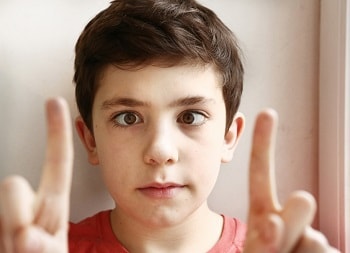Many people have heard of a “lazy eye”, but aren’t exactly sure what it is, how to avoid it or how to get rid of it.

Overview
The medical term for lazy eye is “amblyopia.” Amblyopia occurs when your brain favors one eye, often due to poor vision in your other eye. Eventually, your brain might ignore signals from your weak, or “lazy,” eye. The condition can result in vision impairment and loss of depth perception.
Your affected eye doesn’t necessarily look different, although it may “wander” in different directions. That’s where the term “lazy” comes from. The condition will usually only affect one of your eyes, but in certain circumstances, the vision in both of your eyes can be affected.
The condition usually occurs in children.
It’s important to note that a lazy eye isn’t the same as a crossed or turned eye. That condition is called strabismus. However, strabismus can lead to amblyopia if your crossed eye gets much less use than your uncrossed one.
If amblyopia goes untreated, temporary or permanent loss of vision can occur. This can include loss of both depth perception and 3-D vision.
What are the signs of lazy eye?
Amblyopia may be hard to detect until it becomes severe. Early warning signs include:
- a tendency to bump into objects on one side
- an eye that wanders inward or outward
- eyes that appear not to work together
- poor depth perception
- double vision
- squinting
What causes a lazy eye?
There are three types of lazy eye, based on the underlying cause:
-
Strabismic amblyopia.
Strabismus is the most common cause of lazy eye. To avoid double vision caused by poorly aligned eyes, the brain will ignore the visual input from the misaligned eye, leading to amblyopia in that eye (the "lazy eye"). This type of amblyopia is called strabismic amblyopia.
-
Refractive amblyopia.
Sometimes, a lazy eye is caused by unequal refractive errors in the two eyes, despite perfect eye alignment. For example, one eye may have significant nearsightedness or farsightedness, while the other eye does not. Or one eye may have significant astigmatism and the other eye does not. In such cases, the brain relies on the eye that has less uncorrected refractive error and "tunes out" the blurred vision from the other eye, causing amblyopia in that eye from disuse. This type of lazy eye is called refractive amblyopia (or anisometropic amblyopia).
-
Deprivation amblyopia.
This is lazy eye caused by something that obstructs light from entering and being focused in a baby's eye, such as a congenital cataract. Prompt treatment of congenital cataracts with cataract surgery is necessary to allow normal visual development to occur and prevent a visual disability from lazy eye.
How Is Amblyopia Diagnosed?
All children should be tested before they are school-age. Your child's doctor or the vision program at school will check to make sure that:
- Nothing blocks the light coming into her eyes.
- Both eyes see equally well.
- Each eye moves like it should.
If there's any problem, the doctor or school nurse may suggest you take her to an eye specialist. If you feel something’s wrong with your child's vision -- even if nothing shows up at the vision check -- make an appointment with a pediatric eye doctor.
Some eye care experts say kids should get an eye exam at 6 months, 3 years, and then every year while they’re in school. Ask your doctor what’s right for your child.
If amblyopia runs in your family, your child is more likely to get it. Remember, you can’t tell just by looking at her if she has it. Early diagnosis and treatment are the keys to good results.
How is lazy eye treated?
Treating underlying eye conditions is the most effective way to treat amblyopia. In other words, you need to help your damaged eye develop normally. Early treatment measures are simple and may include eyeglasses, contact lenses, eye patches, eye drops, or vision therapy.
The earlier you get treatment, the better the outcome. However, recovery may still be possible if your amblyopia is diagnosed and treated when you’re older.
Glasses/contact lenses
If you have amblyopia because you’re nearsighted or farsighted, or have astigmatism in one eye, corrective glasses or contact lenses may be prescribed.
Eye patch
Wearing an eye patch over your dominant eye can help strengthen your weaker eye. Your doctor will probably suggest that you wear the patch 1 to 2 hours a day, depending on how severe your amblyopia is. The patch will help develop your brain area that controls vision.
Eye drops
Drops may be used once or twice a day to cloud your vision in your healthy eye. Like an eye patch, this encourages you to use your weaker eye more. This is an alternative to wearing a patch.
Surgery
If you have crossed eyes or eyes that point in opposite directions, you may require surgery on the muscles of your eye.
Remember: Early detection of lazy eye is essential for the best treatment outcomes. Schedule routine eye exams for you children with an eye doctor near you beginning at 6 months of age and again at age 3 to prevent vision problems from lazy eye.
Sources:
- Amblyopia: Protect your child from lazy eye By Gary Heiting, OD
- Amblyopia and Your Child's Eyes
Make your appointment today
To make your appointment, simply give us a call (760)-948-3345 or
or
Due to COVID-19 safety protocols, all eyewear services are currently by appointment only. Please call to make an appointment.
At Golden Eye Optometry, we view good vision care as front line protection at every age. A routine eye exam can detect more than poor vision. It can shed early light on glaucoma, macular degeneration, cataracts and diabetes.